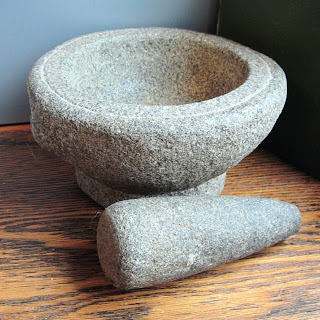PULIH MARI BALI WUTUH PURNA WALUYA JATI Mutu-Coét (Sundanese) Mutu-Cowét (Sundanese) Muntu-Ciri (Javanese) Munthu-Ciri (Javanese) Still about surviving traditional artifact or habit that is actually a practice of ‘sustainability’, another groups presented jamu gendong, the traditional herbal drinks with certain medicinal purposes (jamu) that are sold by a woman who carry (gendong) the jamu bottles on foot, going around a marketplace or a neighborhood, and mutu-coet, a set of mortar-and-pestle made of stone that is still used to crush or ground food ingredients. Jamu gendong The group that proposed the subject of jamu gendong compared the system to food supplements or medications that are sold in conventional shops and come in packed pills. The group suggested to retain the system, since jamu gendong does not provide only herbal drinks, but also a social exchange between the seller and the customers. The conversation led to the fact that almost all local medicines are actually ‘modernized jamu‘, which are produced in a mass quantity to reach wider customers and therefore should be available in a more practical form (pills, capsules) and sold in vacuumed packages. It was also mentioned that some jamu gendong sellers are also using instant jamu (that comes in sachets) instead of fresh ingredients that they ground and mix themselves. Jamu bottles There’s also an issue of jamu gendong as a consumption of people from the lower class, and is only upgraded by having them in a gendong setting in restaurants and hotels, with ‘exotic’ and ‘traditional’ taglines. Seems like genuine jamu gendong is diminishing, since it is indeed rarely seen anymore in marketplaces and streets, especially in urban areas. But the need remains: both the genuine needs of people who actually consume jamu gendong for its purposes and people who don’t want to see the tradition diminishes and gone. Mutu-coet Stone Alu-Lumpang or Indonesia Mortar-Pestle and Sundanese Mutu-Coet (Mutu-Cowet) or Javanese Muntu-Ciri (Munthu-Ciri) The group that discussed mutu and coet, or pestle and mortar, stated that it’s not only the function of the set that’s irreplaceable, but also the myth that goes around it. It is believed, in Sundanese tradition, that a couple who wants to have a daughter should exchange a pestle with a mortar that belongs to a couple who wants to have a son, and vice versa. Mutu and coet are commonly made of volcanic stones and are known to be quite durable, the set is even handed down for generations. Food ingredients that are grounded with mutu and coet have different qualities in textures and taste, compared to those processed in an electric kitchen processor, and therefore are preferred in preparing (traditional) dishes. Like the jamu, it takes a certain skill to ground and mix food properly with mutu-coet, a skill that we might all lose when we stopped using them altogether. Coét What do they have to do with “sustainability”? Considering the issues of jamu gendong, mutu-coet and, previously, banana leaf as a food wrapper, they all come down to the matter of food and eating habit. It would lead to the discussion about fast food vs. slow food, energy-consumptive vs. labor-intensive process, time-saving vs. time-consuming, artificial vs. organic, etc. As people living in highly populated urban areas, with all those choices, we sometimes prefer to choose something fast and easy. We should be smarter in choosing what’s good not only for our body, but also for the resources they come from and the impacts they would cause. Sundanese Mutu-Coet (Mutu-Cowet) or Javanese Muntu-Ciri (Munthu-Ciri) |
>>> Daftar Jamu Godog Kendhil Kencana








Tidak ada komentar:
Posting Komentar